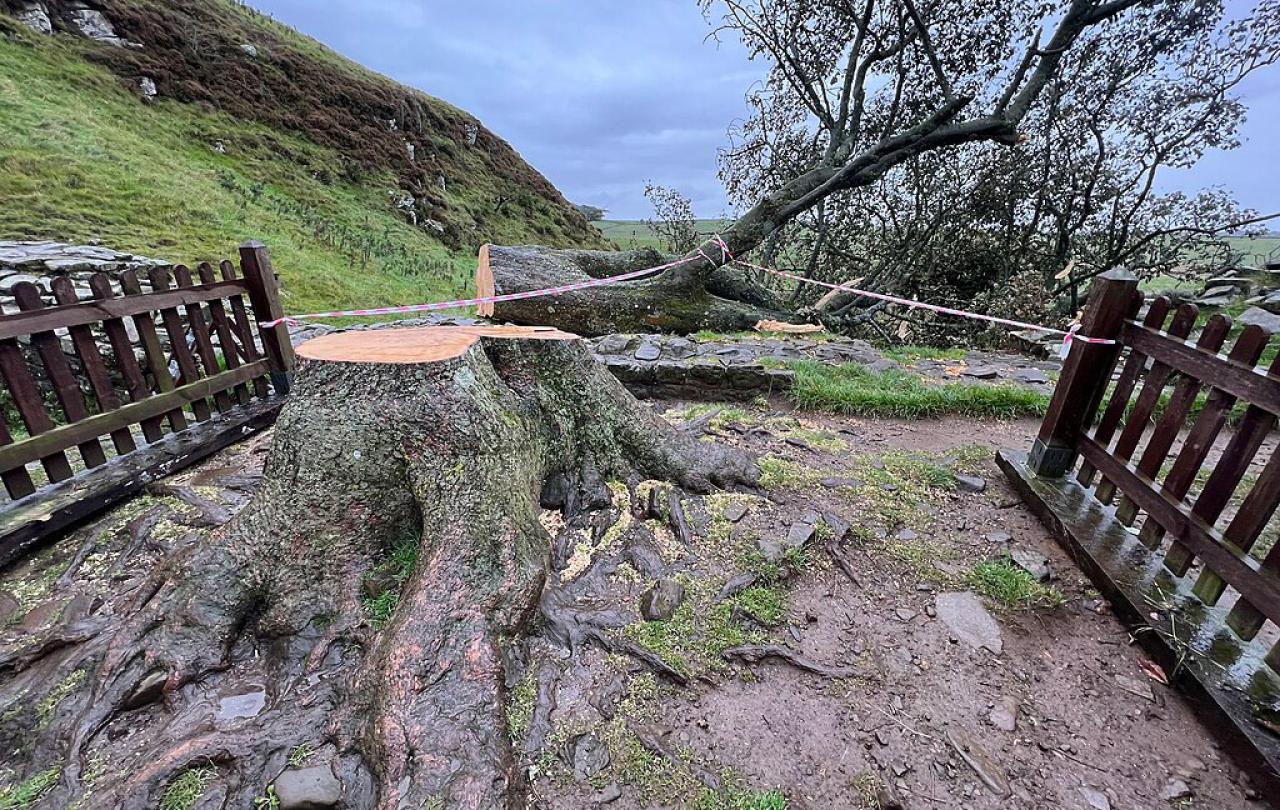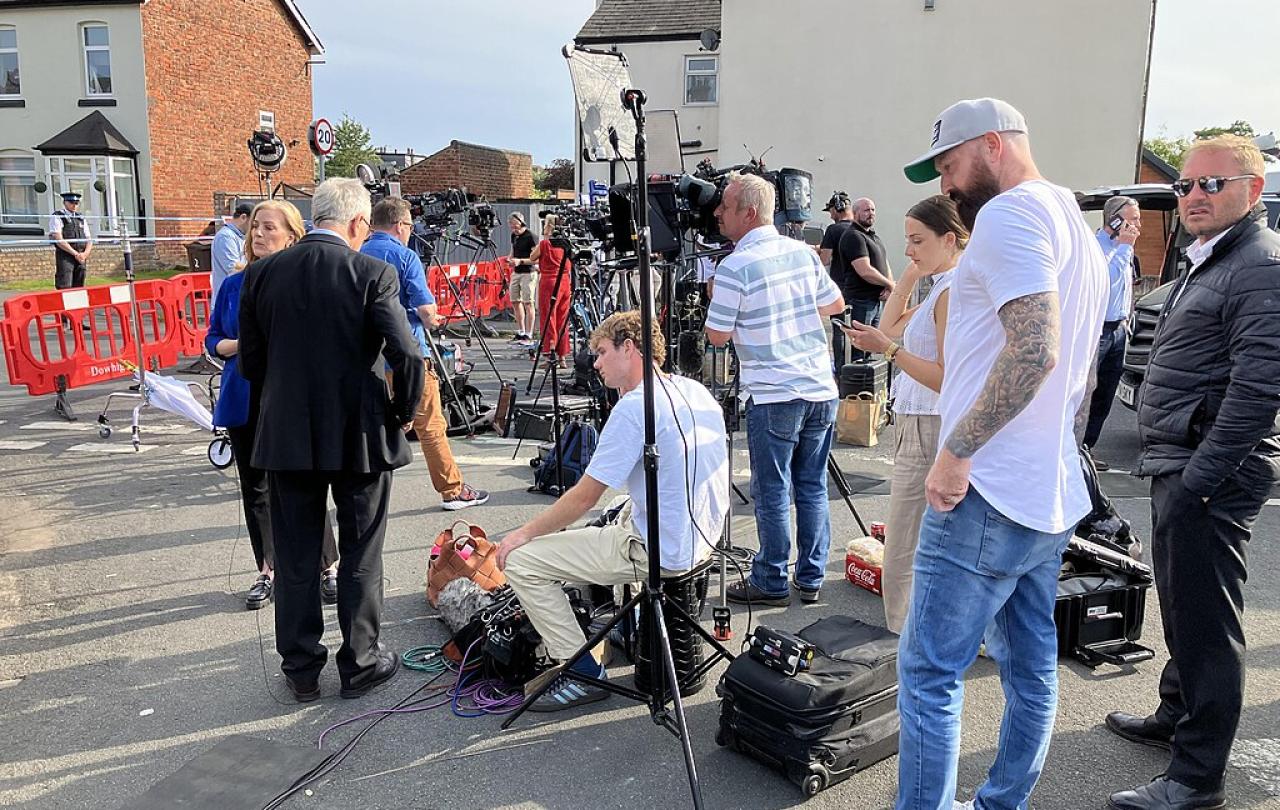
It was Andy Warhol who is said to have uttered the famous statement: “In the future, everyone will be world-famous for 15 minutes." Never mind the fact that the quotation has been attributed to other people as well, whoever came up with it first can hardly have anticipated how quickly it would come true.
In our times, social media has democratised information. We all now have our own individual press office, issuing our considered statements to the world in the form of Instagram or Facebook posts, comments on X, reels and the like. Secretly we all hope one of our gems of wisdom, a joke or a video of something weird will go viral - in a positive way - and we will get our 15 minutes of fame.
I was thinking of all this recently on a walk by Hadrian's Wall in Northumberland in the North-east of England. It so happened that on that very day, the Wall was in the news, as the two men who had cut down the famous tree at Sycamore Gap – the one featured in the Robin Hood film - were convicted of the crime. We looked up at Sycamore Gap, and it was just that - a gap – denuded of its tree, it is now just like any other depression in the escarpment over which Hadrian's Wall runs. Only you couldn't avoid the memory of the distinctive tree silhouetted against the sky which was no longer there, like an awkward smile with a tooth missing.
The story of Daniel Graham and Adam Carruthers is a pretty unsavoury one. Two fairly low life characters without a great deal of purpose seem to have thought of this as a clever stunt which would somehow impress people. The video would go viral, they hoped, and they would be famous - maybe for 15 minutes - basking in the global coverage of their daring action. They seem to have totally miscalculated the affection with which the tree was held and the outrage this stupid act generated. They got their notoriety but not in a good way. Today they wait anxiously to see whether this mindless act of vandalism will lead to a prison sentence.
It is perhaps another symptom of our culture’s desperate desire for fame. Social media is full of influencers who are famous for not much more than being famous. Similar stunts, one more outrageous than the other are performed daily, recorded on YouTube and put out there to gain attention. We are addicted to fame.
The hapless pair were desperate for their moment of fame and got it in a particularly nasty form.
On the same Northumberland trip, not very far away, a very different approach to fame caught my eye. Cuthbert, a seventh century hermit was one of those hardy Christian monks and missionaries who spread the faith in these islands in the wake of the fall of the Roman Empire. He was known for his piety, astonishing miracles and sympathy with nature. His biographer, the Venerable Bede, tells us he would walk into the cold North Sea, standing up to his neck in water to pray, in order to increase his ability to focus on God, the object of his prayers, not the yearnings of his body. On coming out of the water, sea otters would come and warm his feet, sensing that this man was in tune with the heart of the universe and should be cared for and protected.
As his fame grew, Cuthbert tried to find more and more ways to run away from it. He was given permission to leave his monastery in Lindisfarne to go out alone to live on the remote Farne islands, far from prying eyes, giving him the freedom to focus on the one object of his desire - to know God through a deep life of prayer and meditation. People would try to come to see him, fellow monks bringing supplies, or pilgrims looking for a word of wisdom from the holy man, yet his focus was ruthless. Eventually, says Bede, “he shut himself away from sight within the hermitage, rarely talking to visitors even from the inside, and then only through the window… in the end he blocked it up and opened it only to give a blessing or for some definite need”.
The difference between Graham / Carruthers and Cuthbert could hardly be more stark. The hapless pair were desperate for their moment of fame and got it in a particularly nasty form - fame that turns out to be more like shame. Cuthbert fled from fame, longing for the attention not of other people but of his Maker and Redeemer.
Cuthbert’s relentless pursuit of God, and its results in a remarkable life - weird in a different and more nourishing way than the stunts on YouTube - fascinated people. After he died, his bones were transferred to Durham Cathedral where they still lie today. You find the name of St Cuthbert everywhere in the North East – on schools, road signs, coffee shops and fishing boats. It’s a name that will endure after the destroyers of the sycamore tree are long forgotten. We're still talking about Cuthbert 1,400 years later.
Fame is an elusive and dangerous thing. Tom Holland once called it “a beast that you can't control or be prepared for.” If you chase it, it rarely turns out well. More often than not you get the wrong kind of (unwelcome) fame. The best kind comes when you’re not making fame itself the thing you’re looking for. If you ignore it, and seek something more satisfying, something really worth attention – which for Cuthbert was God, the source of all beauty, truth and goodness - you won’t be worried whether you’re famous or not, because your heart will be full of something much more lasting and worthwhile.
Celebrate our 2nd birthday!
Since Spring 2023, our readers have enjoyed over 1,000 articles. All for free.
This is made possible through the generosity of our amazing community of supporters.
If you enjoy Seen & Unseen, would you consider making a gift towards our work?
Do so by joining Behind The Seen. Alongside other benefits, you’ll receive an extra fortnightly email from me sharing my reading and reflections on the ideas that are shaping our times.
Graham Tomlin
Editor-in-Chief





